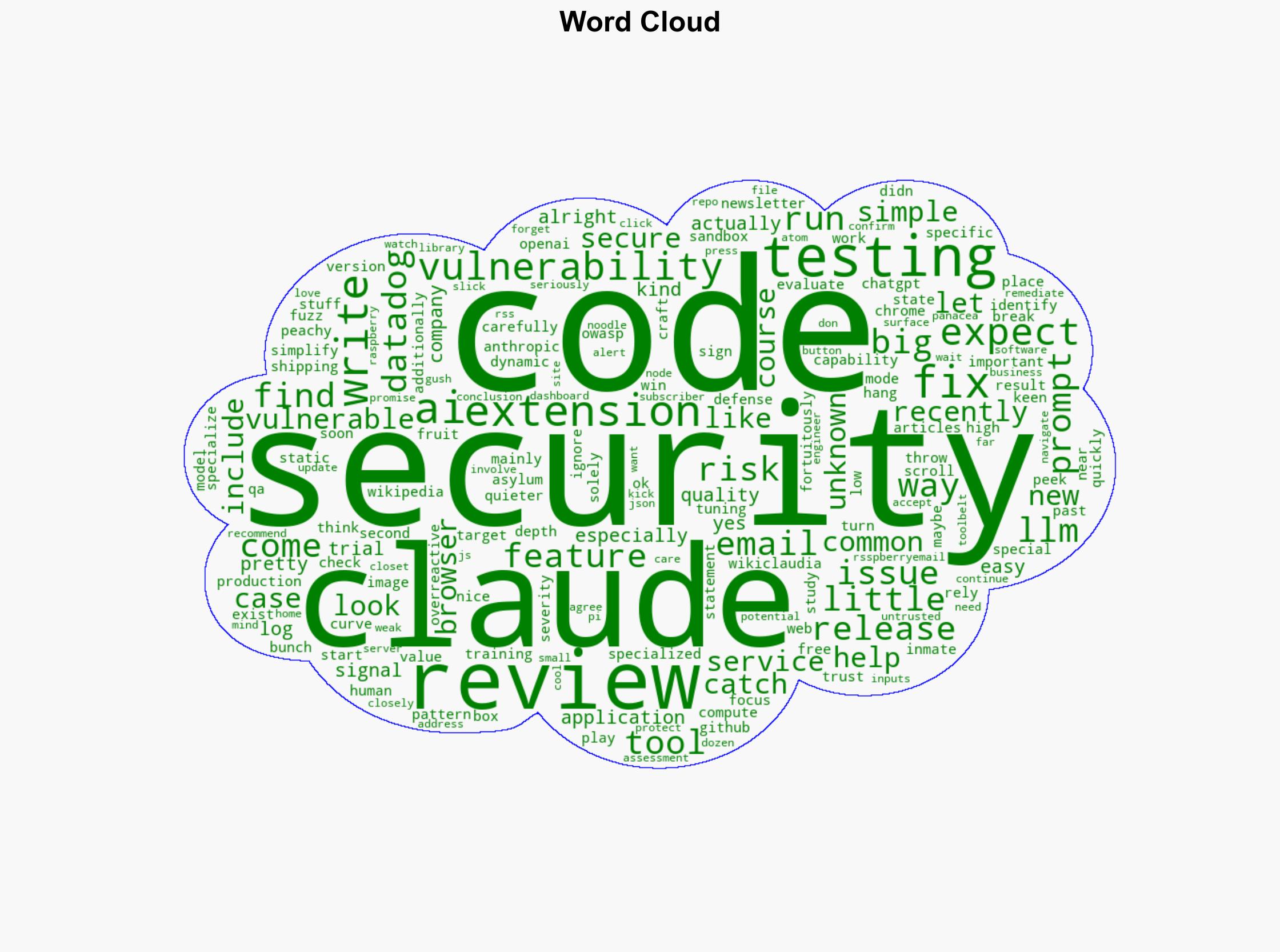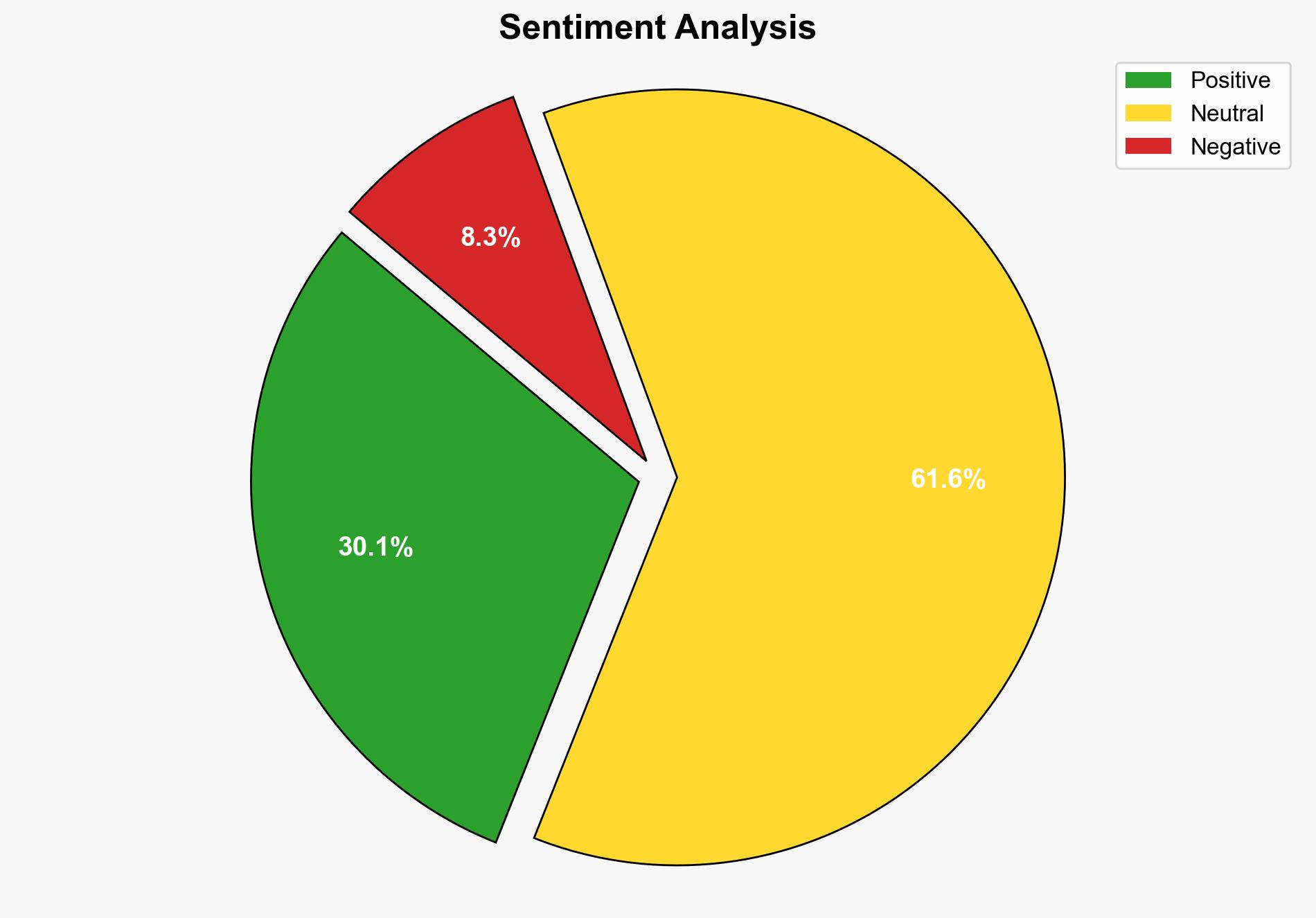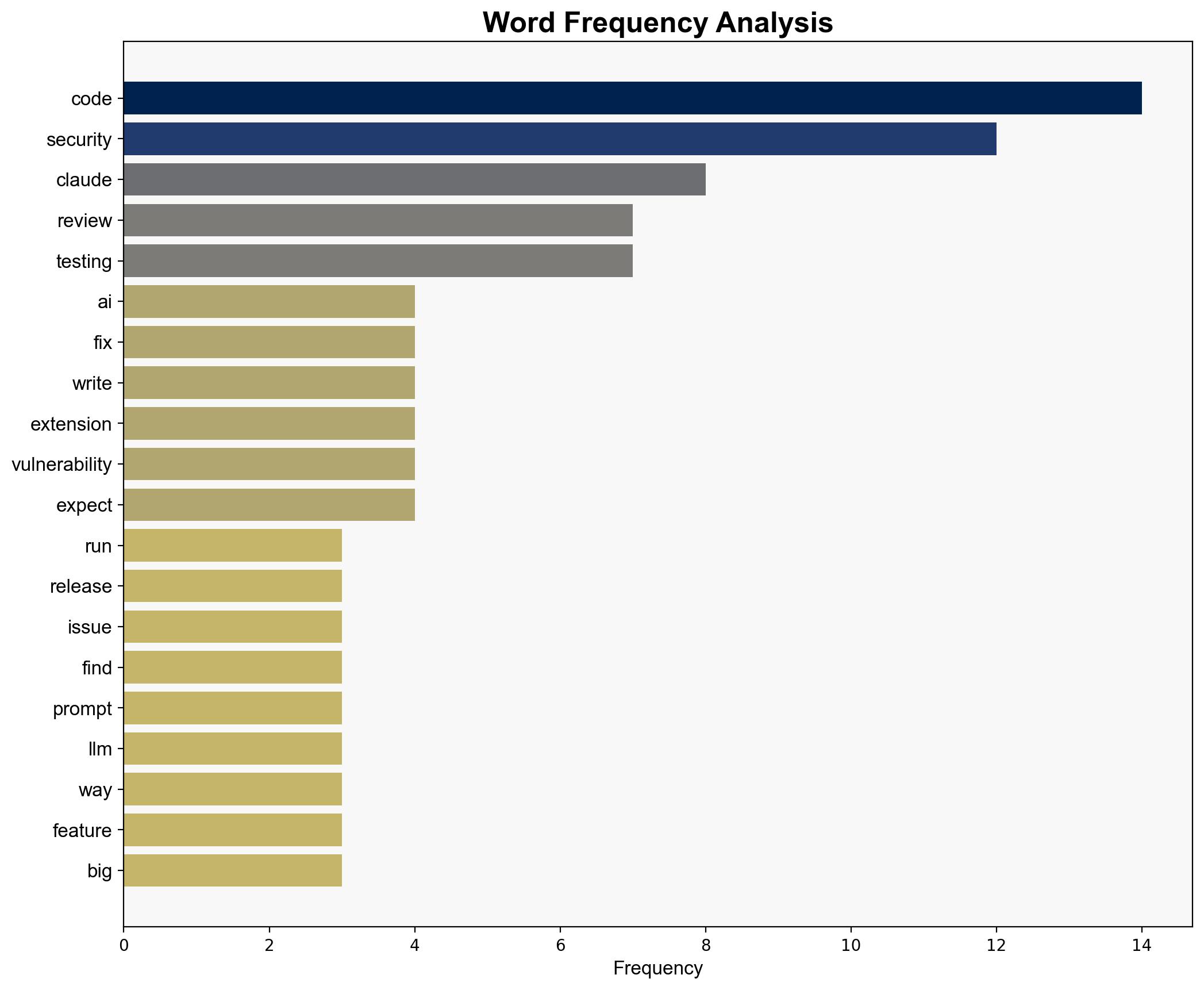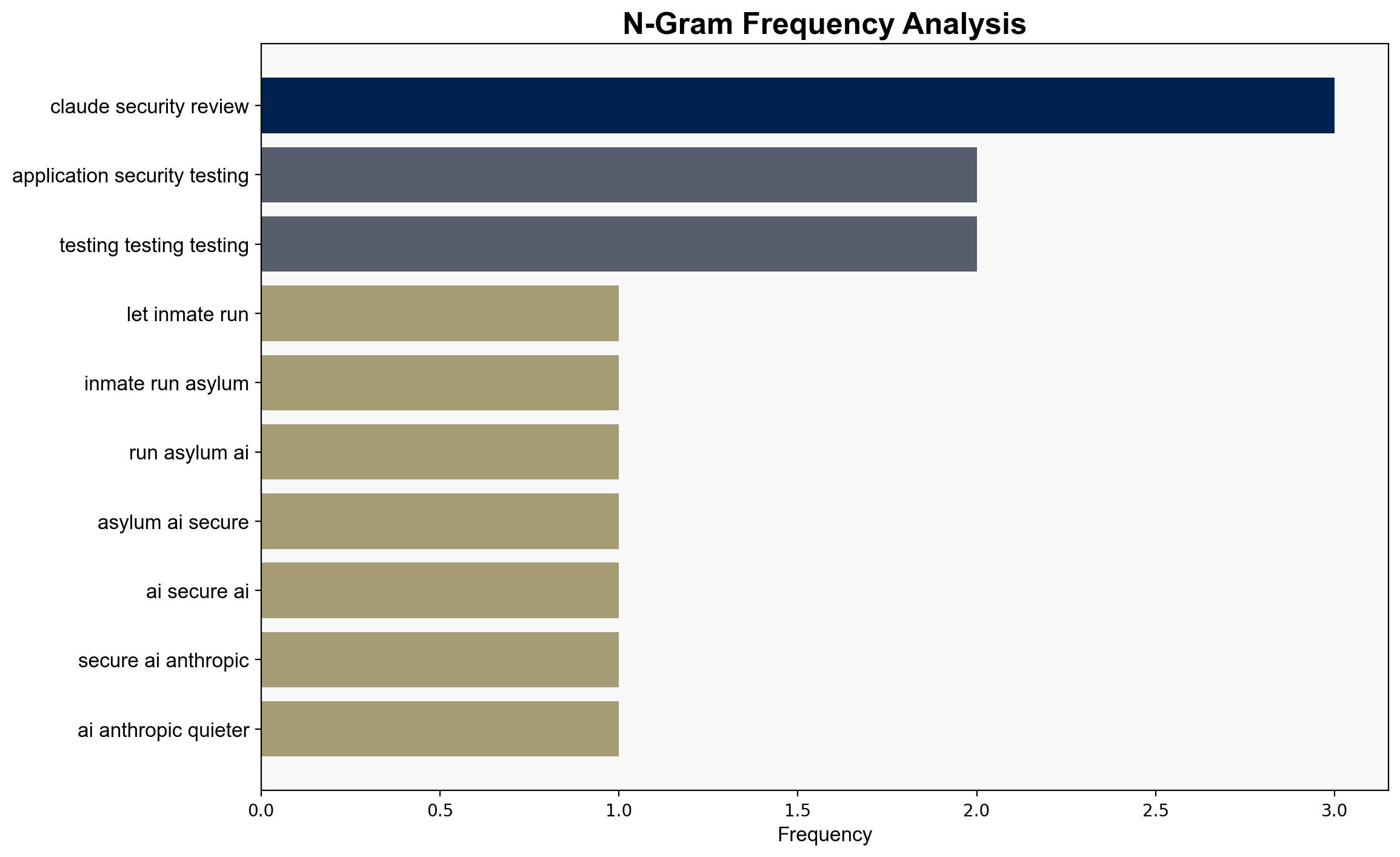Letting inmates run the asylum Using AI to secure AI – Mattsayar.com
Published on: 2025-08-15
Intelligence Report: Letting inmates run the asylum Using AI to secure AI – Mattsayar.com
1. BLUF (Bottom Line Up Front)
The most supported hypothesis is that AI tools, like Claude, are being used effectively to identify and mitigate security vulnerabilities in code, albeit with limitations. The confidence level is moderate due to the presence of both supporting and contradicting evidence. It is recommended to integrate AI tools with traditional security practices to enhance overall cybersecurity measures.
2. Competing Hypotheses
1. **Hypothesis A**: AI tools, such as Claude, are effectively enhancing cybersecurity by identifying and addressing code vulnerabilities, thus improving overall security posture.
2. **Hypothesis B**: The reliance on AI tools for security reviews is insufficient and may lead to complacency, as these tools primarily target low-hanging fruit and may overlook more complex vulnerabilities.
Using ACH 2.0, Hypothesis A is supported by the evidence of AI tools identifying vulnerabilities and integrating with existing workflows. Hypothesis B is supported by the mention of potential oversight of complex vulnerabilities and the need for comprehensive security practices.
3. Key Assumptions and Red Flags
– **Assumptions**: AI tools are assumed to be reliable and capable of identifying all significant vulnerabilities. There is an assumption that AI integration will be seamless and universally adopted.
– **Red Flags**: The potential for AI tools to miss complex vulnerabilities is a significant concern. The over-reliance on AI without human oversight could lead to security gaps.
– **Blind Spots**: The article does not address the potential for AI tools to be manipulated or the risk of AI-generated false positives/negatives.
4. Implications and Strategic Risks
The integration of AI tools in cybersecurity could lead to improved efficiency and reduced human error. However, over-reliance on AI could result in missed vulnerabilities, leading to potential breaches. The economic impact includes reduced costs for security reviews but may increase if AI tools are not adequately managed. Geopolitically, the widespread use of AI in cybersecurity could shift the balance of power in cyber warfare.
5. Recommendations and Outlook
- Integrate AI tools with traditional security practices to ensure comprehensive coverage.
- Conduct regular audits and updates of AI tools to address evolving threats.
- Scenario-based projections:
- Best Case: AI tools significantly reduce vulnerabilities, leading to enhanced security and reduced costs.
- Worst Case: Over-reliance on AI leads to significant security breaches due to overlooked vulnerabilities.
- Most Likely: AI tools improve efficiency but require ongoing human oversight and integration with traditional practices.
6. Key Individuals and Entities
– Claude (AI tool)
– Datadog (Service for monitoring and security)
– OpenAI (AI research and deployment company)
7. Thematic Tags
national security threats, cybersecurity, counter-terrorism, regional focus




